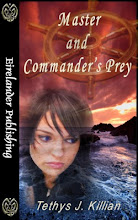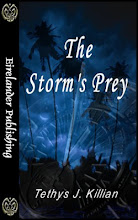The past two months we spent a lot of time on archetypes. What are they and how do they apply to a story. Simply put, the archetypes give you a general set of guidelines for your characters.
If a Nurturer shows up in the middle of a battle, she’s not likely to take up a gun and start shooting. No, she’s more likely to hurry to the injured and comfort them. This in no way makes her a beta character. Her strength isn’t in her ability to fight; it’s her caring that makes her real. Nurturers by nature are ‘fixers’.
In fact, the Nurturer is the polar opposite of the Warrior. It’s why you see them coupled so much. One is the knight in shining armor that will maim or kill anybody who gets in the way of his duty whereas the other is the one who will clean up his mess.
Archetypes are important.
The emotional drive of the archetype is equally important.
Your characters should have ‘real to life’ emotions. That’s never been argued. They should shout when it’s appropriate and turn docile when the time comes to quiet down. Remember, draw your characters in a three dimensional way, it makes this easier. Also, try to understand your character’s motivations.
The one thing I see trip new authors up is putting logic to the emotional drive. That happens to everybody from time to time. The logic of emotions is progressive unless you have a spout off character who rules the world. This progression should fit the archetype.
A general example –
A Nurturer is thrown into the middle of a battle. Her emotional drive would most likely start at ‘horror’, ‘surprise’ or ‘fear’ (remember, she’s not a tom boy who will pick up the closest weapon or a boss who will begin spouting orders. She’s a fixer.) She’ll *probably* assess the situation quickly, and then get to work.
Throughout that scene, you can almost see how she will act. She won’t smile (one of my biggest pet-peeves is characters who smile when the situation doesn’t call for it). She might give off a horrified laugh. But inevitably, she’ll get the job done—her job. And, she’ll do so with the logical progression of emotions.
You can follow this method with any archetype, even blended ones. The trick here is when you blend write down when a certain aspect of their coupled archetype comes forward. Keep this in mind, at a plot point the main archetype always shines through.
Do you think this is really as important as I do? Do you think your reader will even care? Let me know.
Until next time, cheers and happy writing,
T.J.
Subscribe to:
Post Comments (Atom)





.jpg)
.jpg)






1 comment:
What I do know is that a reader will fling your book across the room if you write up your characters in a way that doesn't make sense. No writer gets away with that, and one reader lost beacuse you as a writer took her for an idiot is the biggest blow you can deal to yourself.
So, yes, logical progression of emotion is definitely necessary if you want to deliver a perfectly making-sense story.
Hugs
Z(Aasiyah/Nolwynn)
Post a Comment